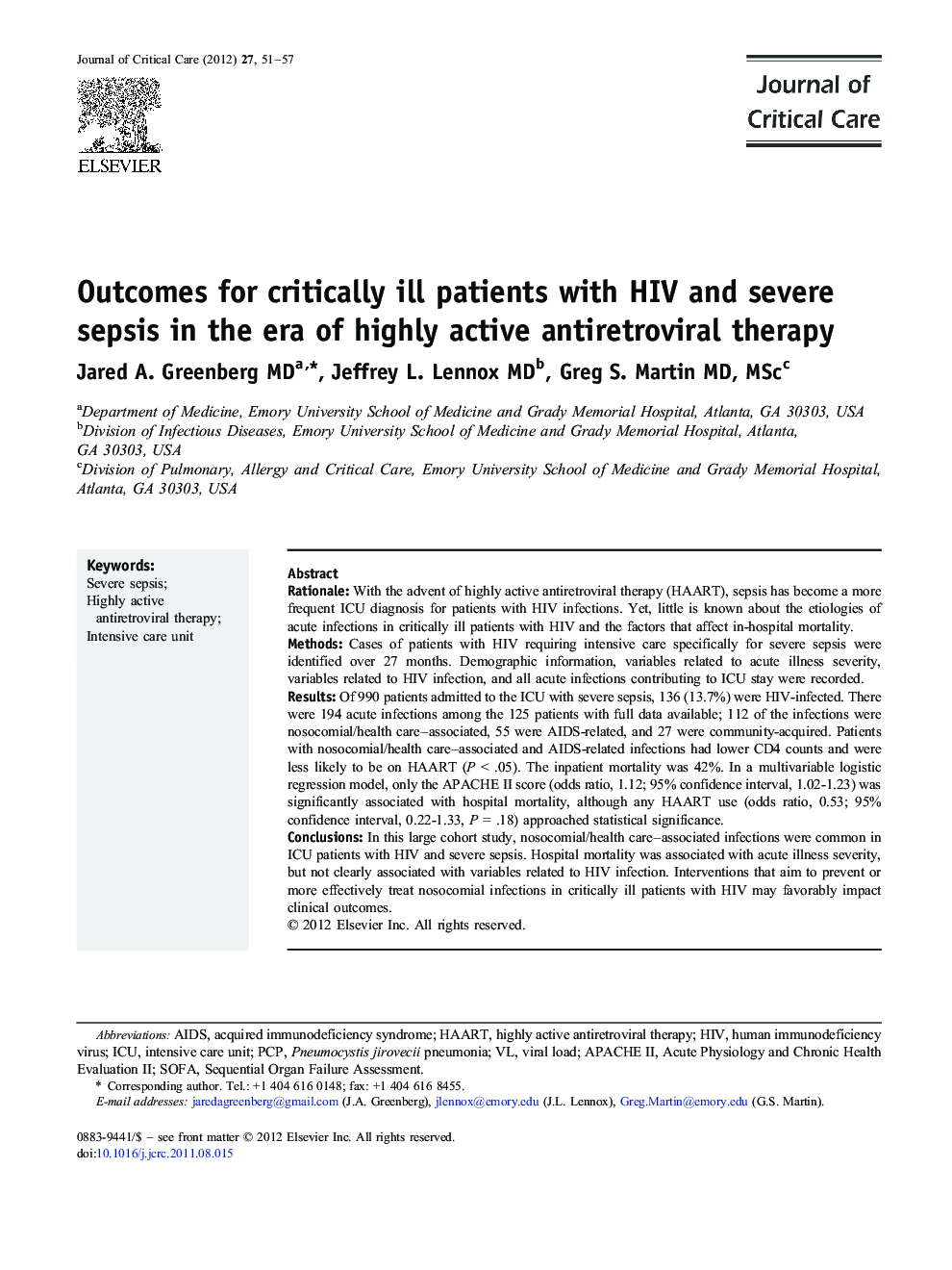| Article ID | Journal | Published Year | Pages | File Type |
|---|---|---|---|---|
| 2765275 | Journal of Critical Care | 2012 | 7 Pages |
RationaleWith the advent of highly active antiretroviral therapy (HAART), sepsis has become a more frequent ICU diagnosis for patients with HIV infections. Yet, little is known about the etiologies of acute infections in critically ill patients with HIV and the factors that affect in-hospital mortality.MethodsCases of patients with HIV requiring intensive care specifically for severe sepsis were identified over 27 months. Demographic information, variables related to acute illness severity, variables related to HIV infection, and all acute infections contributing to ICU stay were recorded.ResultsOf 990 patients admitted to the ICU with severe sepsis, 136 (13.7%) were HIV-infected. There were 194 acute infections among the 125 patients with full data available; 112 of the infections were nosocomial/health care–associated, 55 were AIDS-related, and 27 were community-acquired. Patients with nosocomial/health care–associated and AIDS-related infections had lower CD4 counts and were less likely to be on HAART (P < .05). The inpatient mortality was 42%. In a multivariable logistic regression model, only the APACHE II score (odds ratio, 1.12; 95% confidence interval, 1.02-1.23) was significantly associated with hospital mortality, although any HAART use (odds ratio, 0.53; 95% confidence interval, 0.22-1.33, P = .18) approached statistical significance.ConclusionsIn this large cohort study, nosocomial/health care–associated infections were common in ICU patients with HIV and severe sepsis. Hospital mortality was associated with acute illness severity, but not clearly associated with variables related to HIV infection. Interventions that aim to prevent or more effectively treat nosocomial infections in critically ill patients with HIV may favorably impact clinical outcomes.
